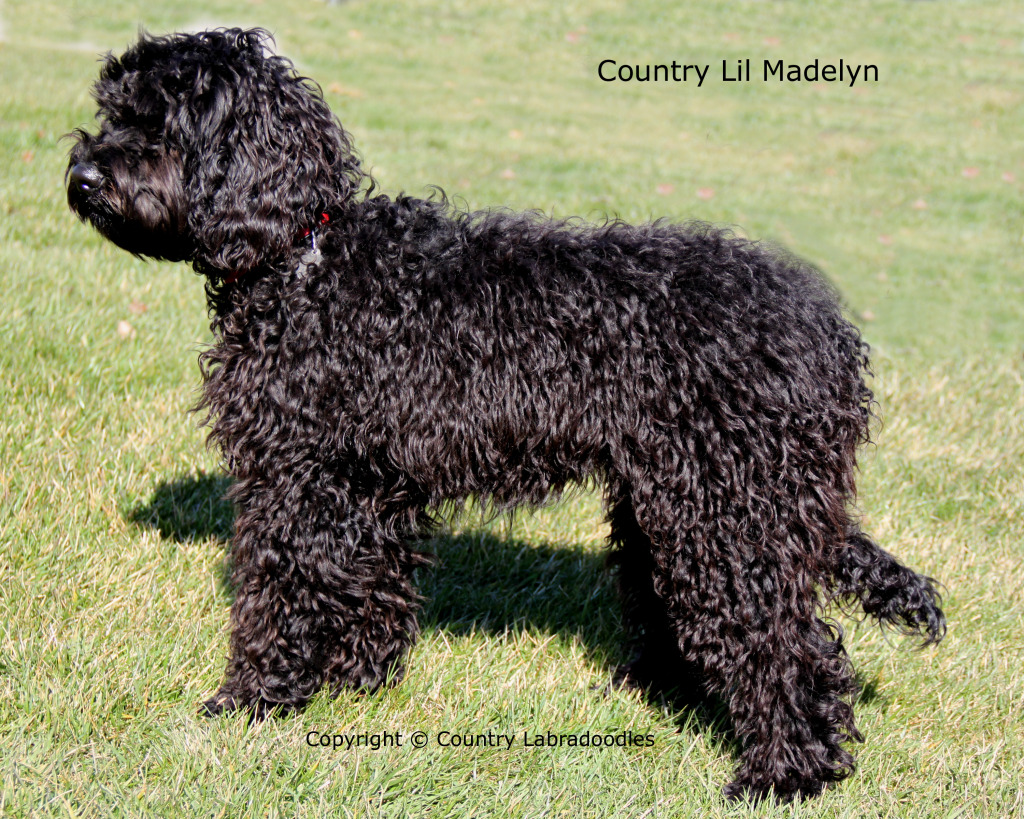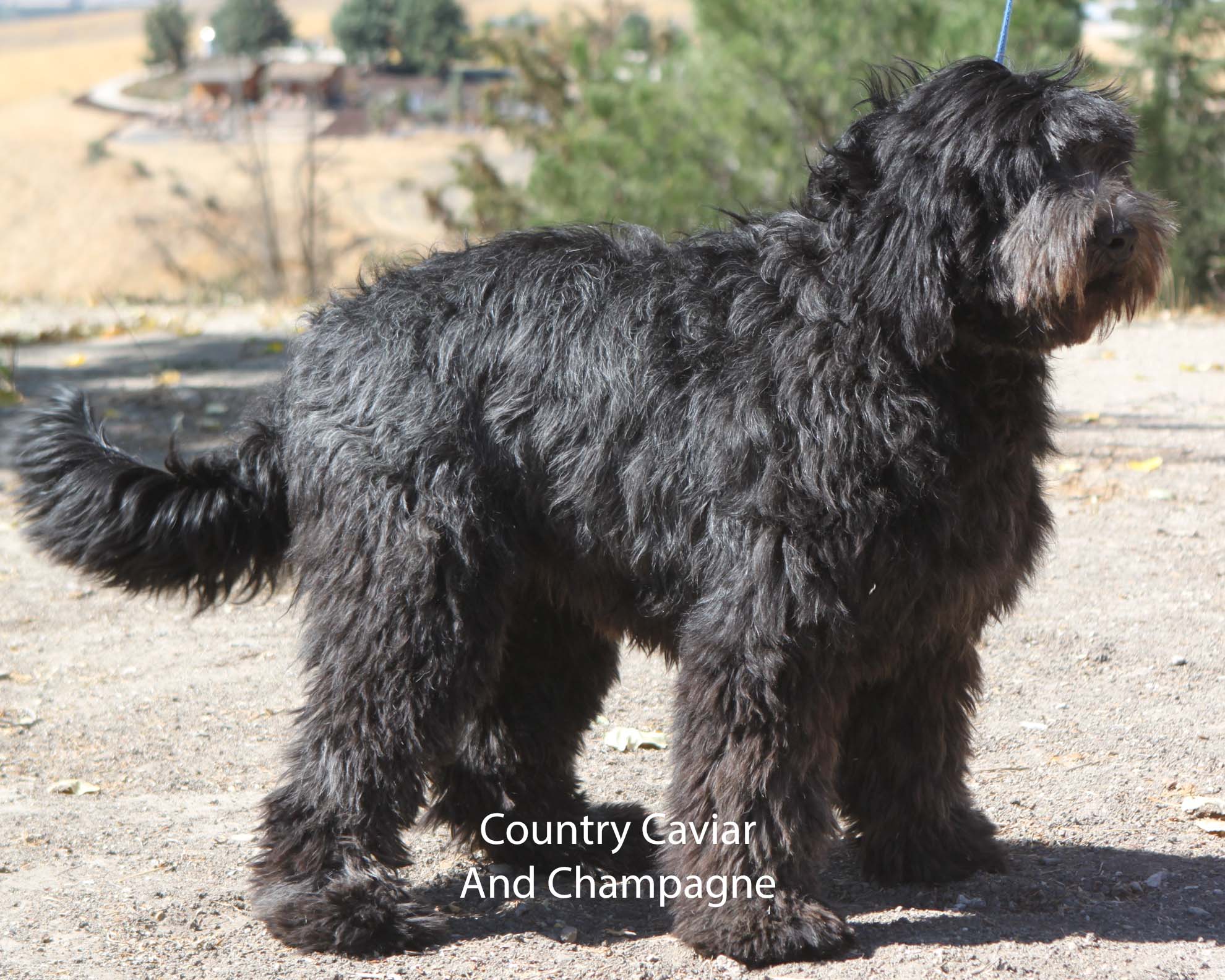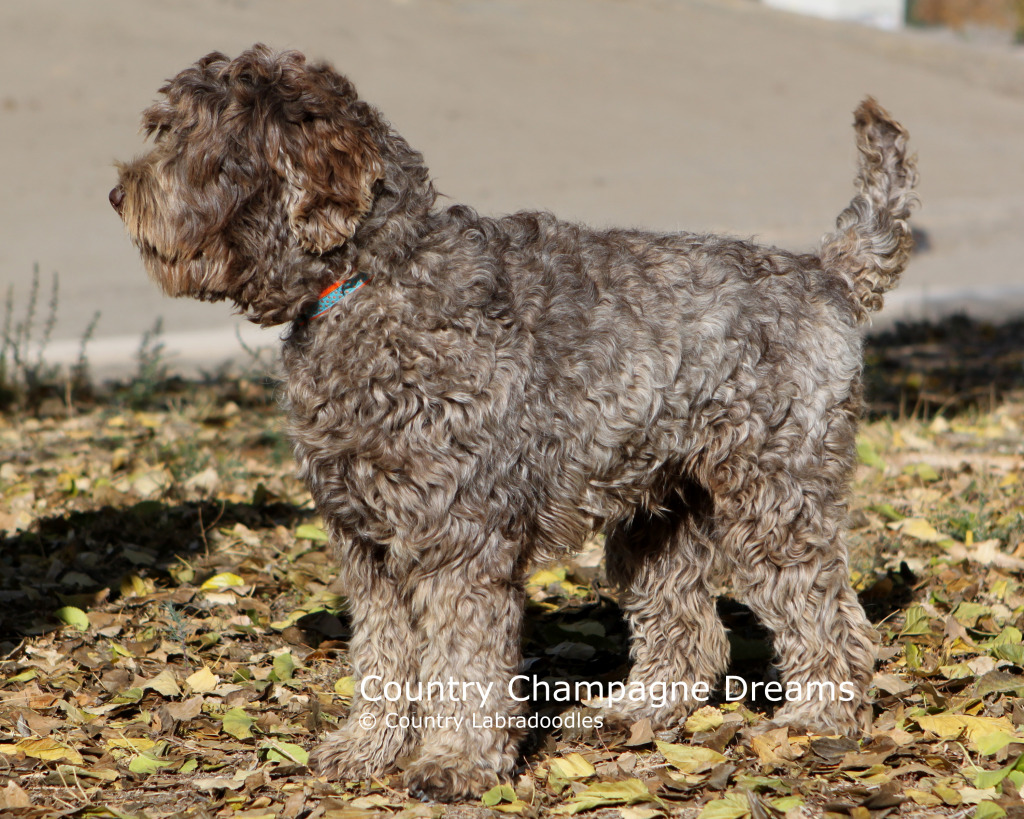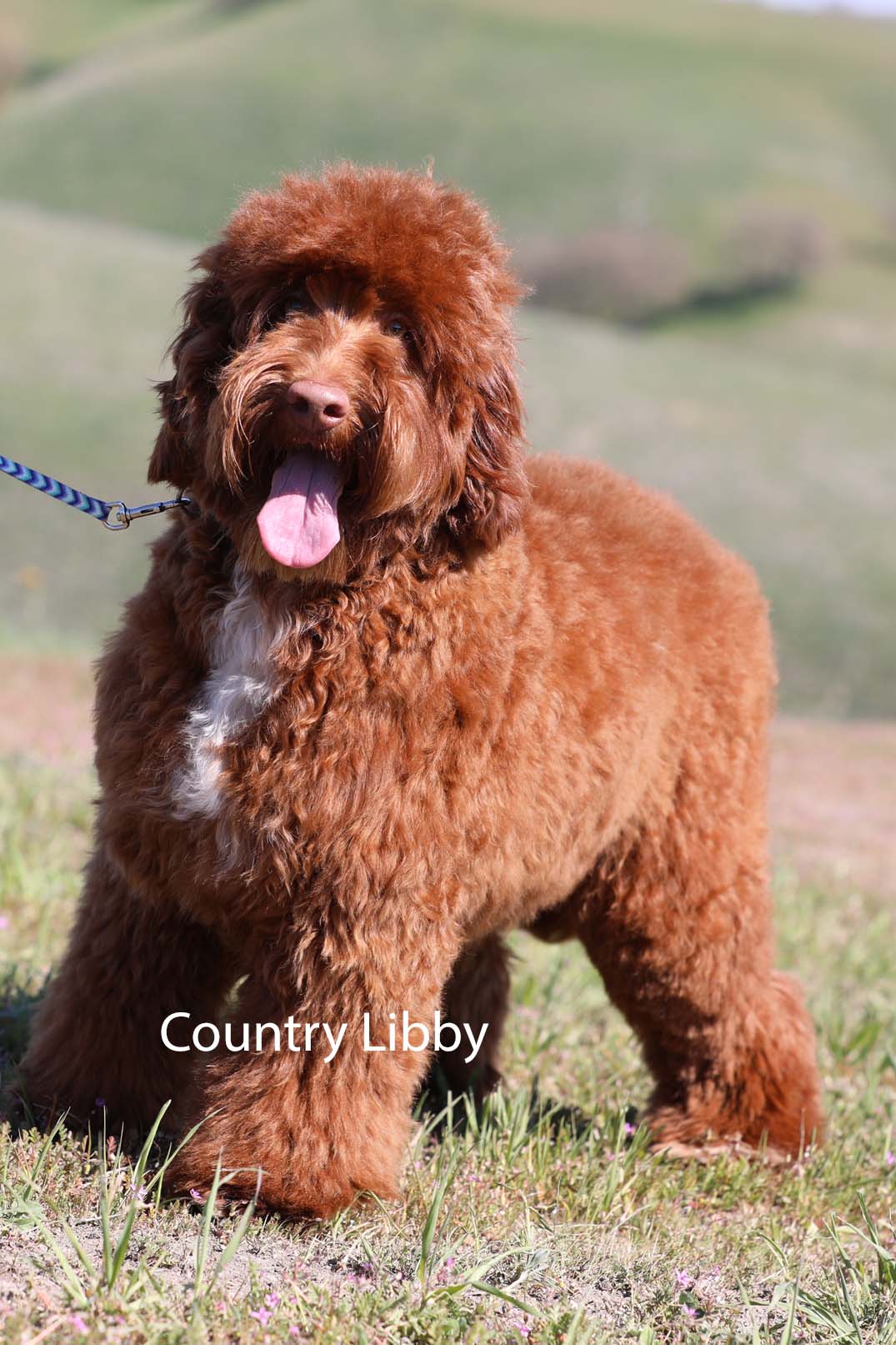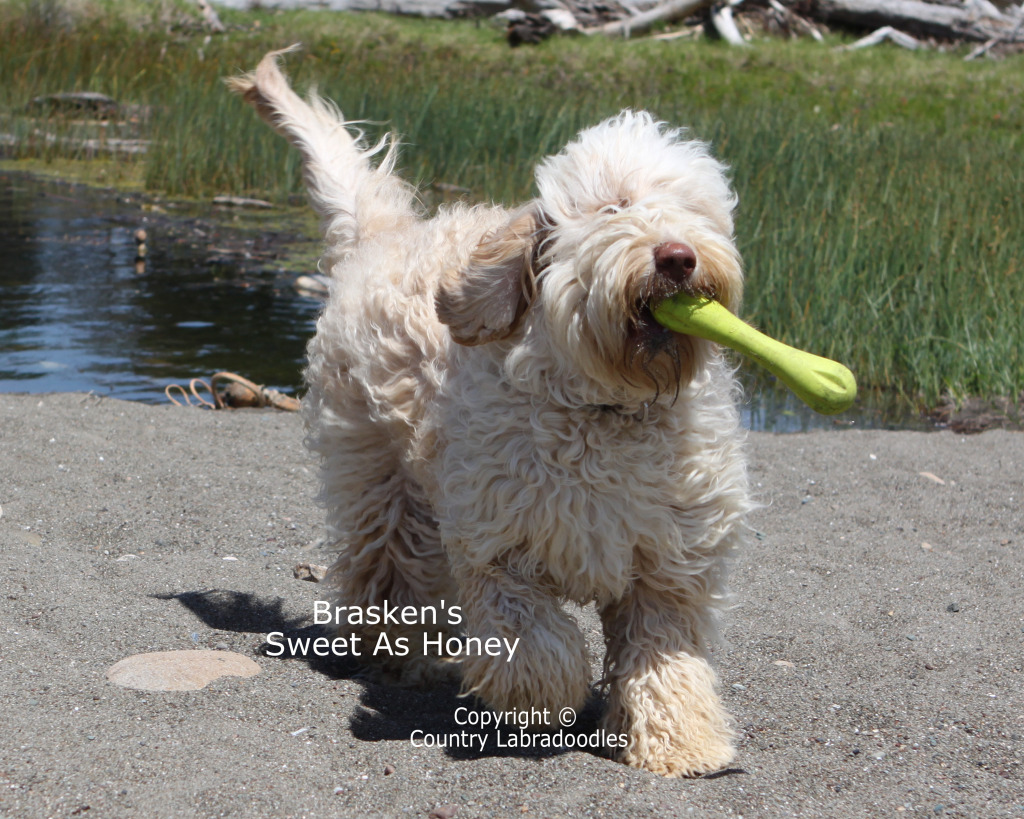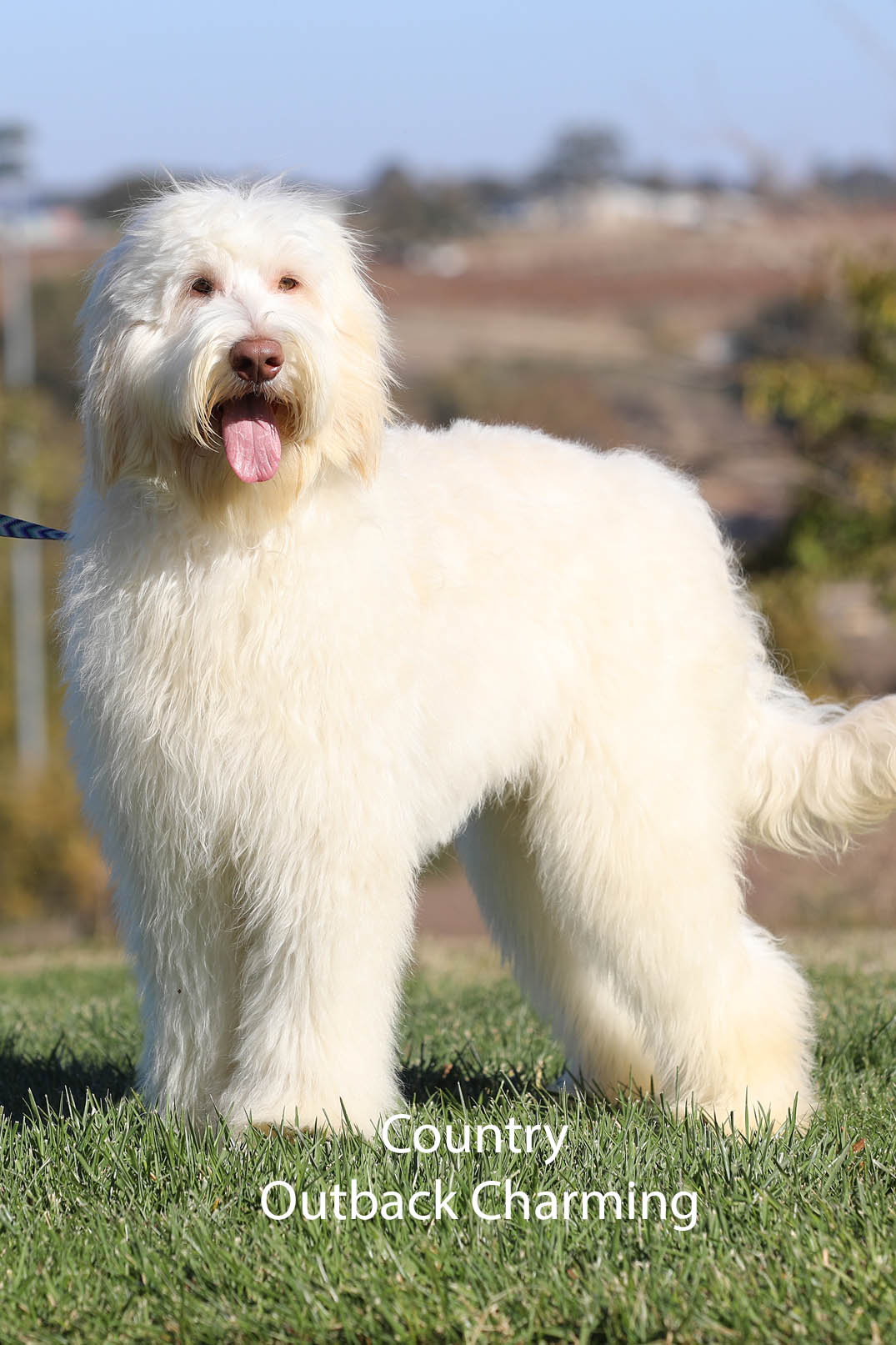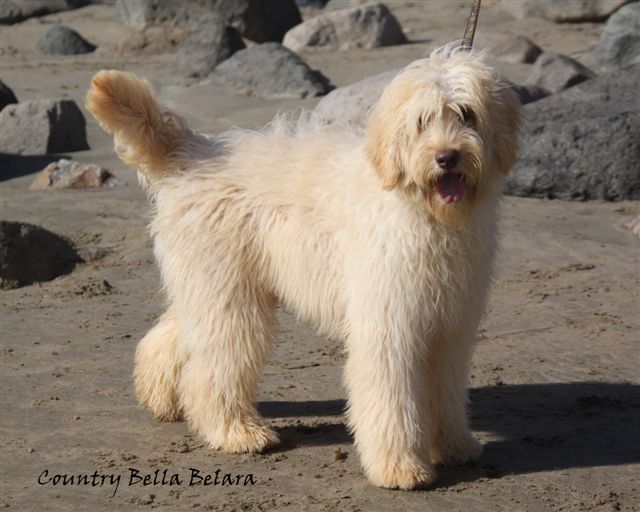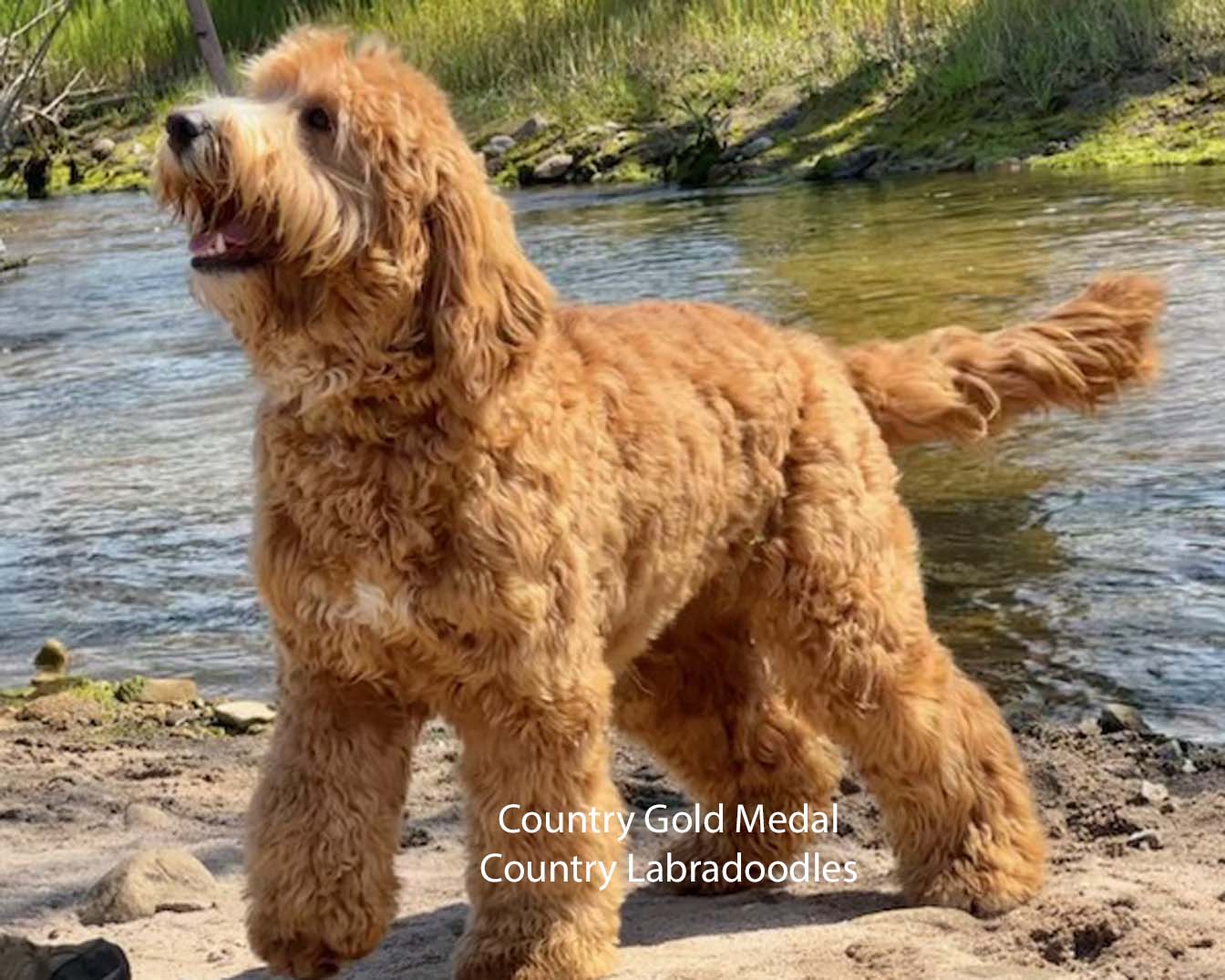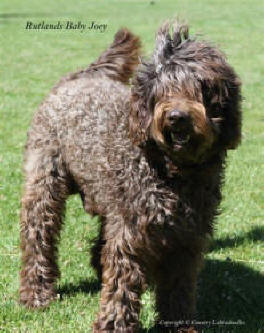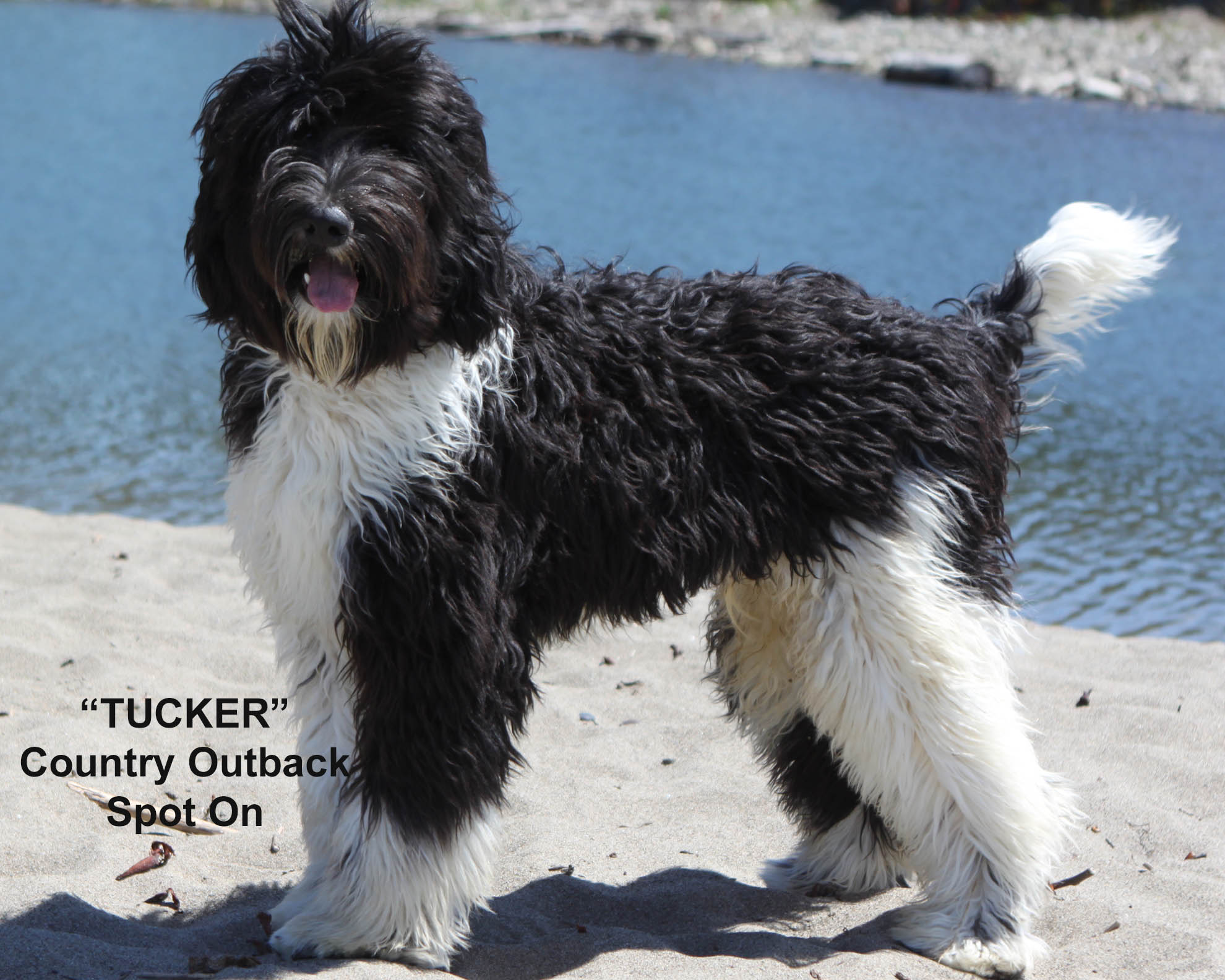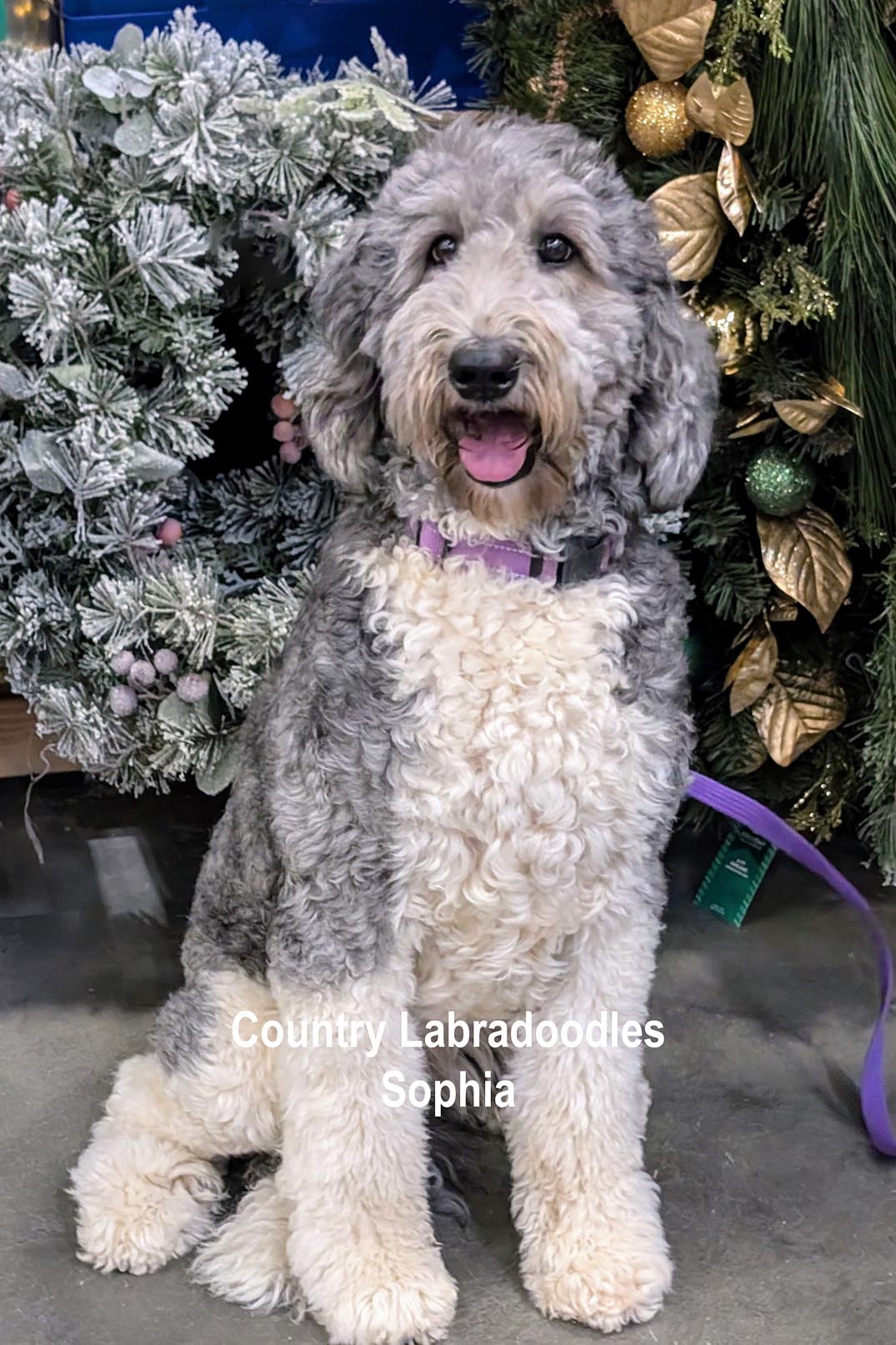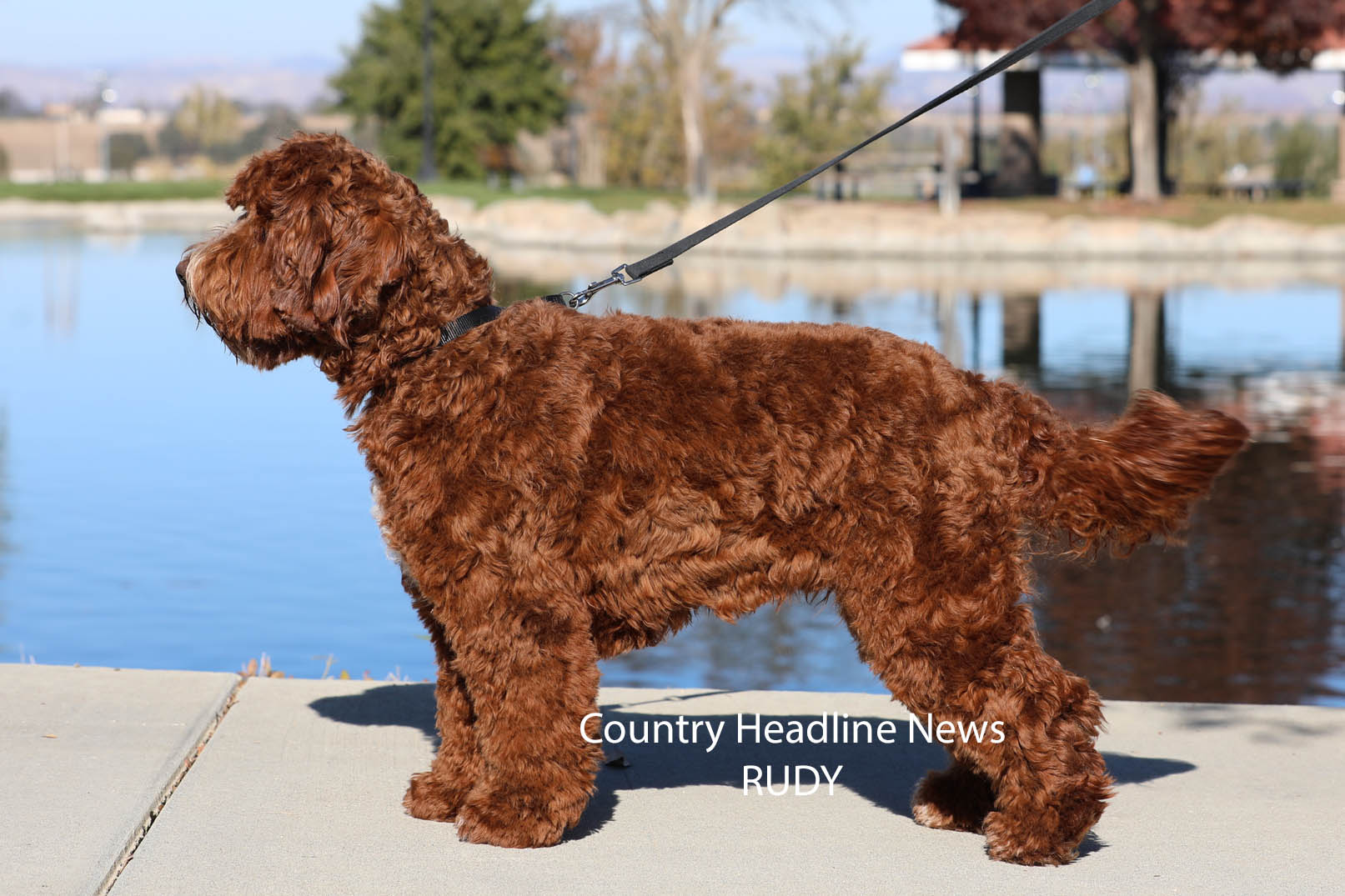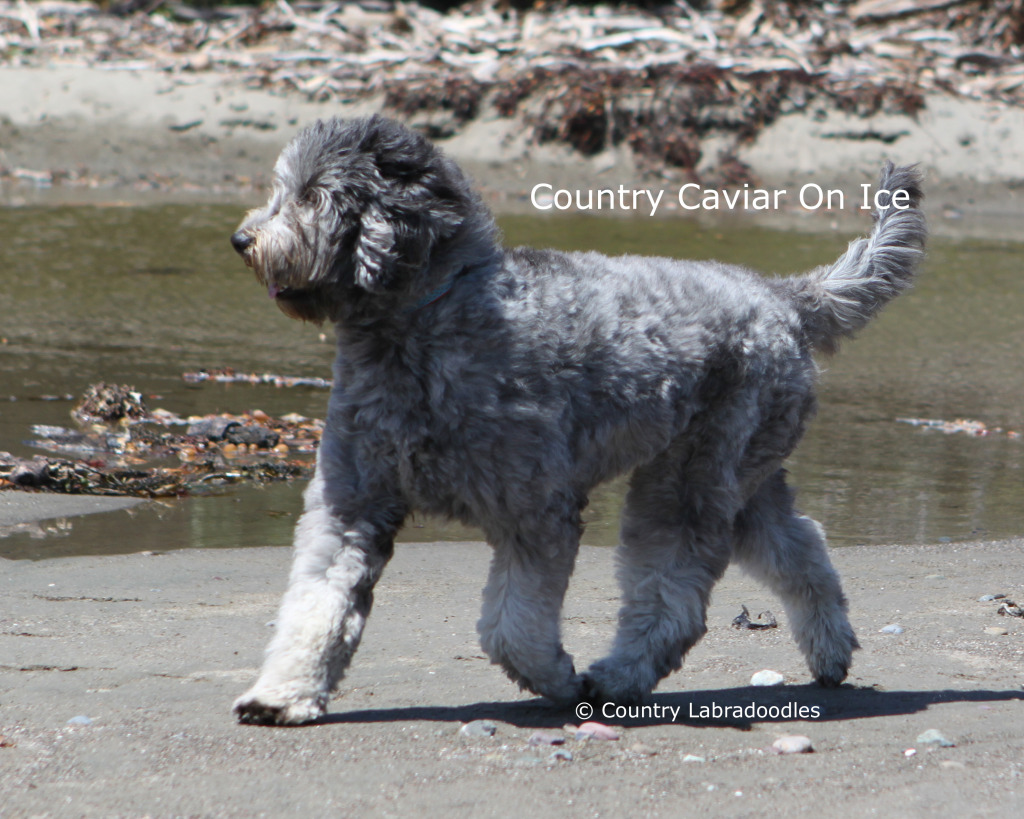WHAT TYPE OF COAT DOES MY LABRADOODLE HAVE?
Typically, breeders and owners will refer to their Australian Labradoodles as Fleece Coated Australian Labradoodles or Wool Coated Australian Labradoodles. These pertain to coat descriptions. There will be no body odor or shedding in the Fleece and Wool coat Early generation dogs with a hair coat will have both odor and shed in varying degrees. It is acceptable to see a coat change from the puppy to adult coat, and also during hormonal changes in fertile bitches. This coat will not shed, and needs to be groomed out.
COAT
Coat length should be 4-6 inches long. It should be straight, wavy or forming spirals and should naturally grow in staples with a soft texture. It should not be too thick or dense nor should it be fluffy or fuzzy. It should be a single coat.
FLEECE
Texture should be light and silky similar to the texture of the Angora Goat. Appearing to contain a silky lanolin in texture. Appearance can range from an almost straight to a flowing wavy type coat with lots of body.
WOOL
Texture is denser than that of the Fleece with a similar texture to that of Lambs Wool. Appearing to contain a sheep lanolin in texture. The ideal wool coat should hang in loose hollow spirals. It is acceptable to exhibit a spring appearance rather than spiral.
WHAT COLOR IS MY LABRADOODLE?
Coat Colors of The Australian Labradoodle
These days you can find the Australian Labradoodle in a number of different and beautiful colors. It is normal that all colors may show bleaching and discoloration over the topcoat, referred to as sunning, this is quite expected and acceptable. The Australian Labradoodle is an active dog and often a service dog that enjoys the outdoors.
BLACK
This color should be a solid black in color with no sprinkling of any other color through the coat. Nose pigment to be Black.
BLACK With SILVER
This color should be a base of black color with a sprinkling of silver color through the coat. Nose pigment to be Black.
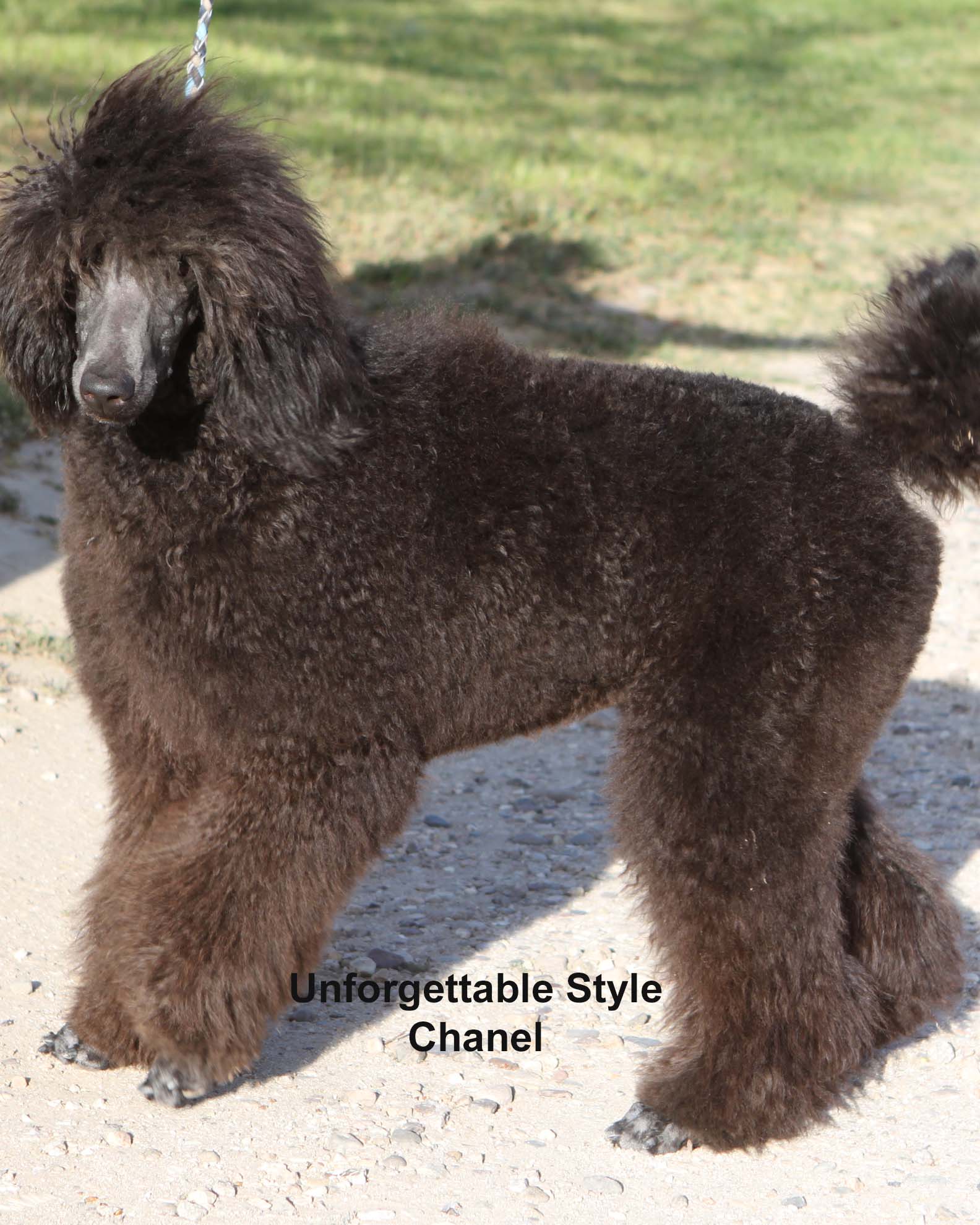
BLUE
This color should be a dark to medium smoky blue in color. Blues are born Black but will have a Blue/Grey skin pigment. The blue coat color will develop over time (1-3yrs) but as a developed adult should have an even coat color. Nose pigment to be Blue/Grey [matching the skin pigmentation]. [Rare color group]
CAFE
This color ranges from a milk chocolate to silver-beige in color and will develop over time (1-3yrs). Nose pigment to be Rose in color [matching the coat color].
CARMEL
This color ranges from a rich gold through to a deep red the preferred color is very much the same color as its namesake “caramel” with even coloration over the entire body. Nose pigment to be Rose in color.
CARMEL ICE
This color ranges from a rich caramel through to creamy color of vanilla preferred color is very much the same color as its namesake “caramel” with even coloration over the entire body. Nose pigment to be Rose in color. Eye color is many times light in shades of hazel or green.
CHALK
This color should be a white color but when compared to white is rather a chalky white in color. Nose pigment to be Black or Rose.
CHOCOLATE
This color should be a dark rich chocolate in color. True chocolates are born almost black in color and maintain the rich dark color throughout their lifetime. Color should be even. Nose pigment to be Rose in color [matching the coat color]. (Rare color group) Most chocolates turn cafe’ or lavender as adults.
CREAM
This color is any lighter color other than pure white. When compared to white this color will have a yellow tint or vanilla tone. Nose pigment to be Black or Rose.
GOLD
This color has also been referred to, as “apricot” should be the color of the inside of a ripe apricot to varying shades of rich Gold in color. A true Gold should not have a lighter root than the outer coat and preferable have an even coloration over the entire body. This color may fade as the dog grows older. Nose pigment to be Black in color.
LAVENDER
This color has a definite smoky lavender chocolate color giving an almost pink to lilac appearance. Lavender dogs are born chocolate and will develop over time (1-3yrs). Nose pigment to be Rose in color [matching the coat color]. [Rare color group]

PARCHMENT
This color is a creamy beige chocolate color reminiscent of a cup of coffee with a generous addition of milk. Parchment dogs are born milk chocolate and will develop over time (1-3yrs). From a distance adult dogs can be mistaken for a dark or smoky cream. Nose pigment to be Rose in color. [Rare color group]
PARTI (BLACK & WHITE)
Parti is more than one color, typically this dog is black, chocolate, or red with white markings or patches on the face head or body. The amount of white will vary on each dog making each a unique individual full of personality. In the early stages of the breed it was considered a rare color group, however it is is now quite common. The parti gene was introduced through the poodle lines or the Cocker Spaniel lines in the history of the breed.
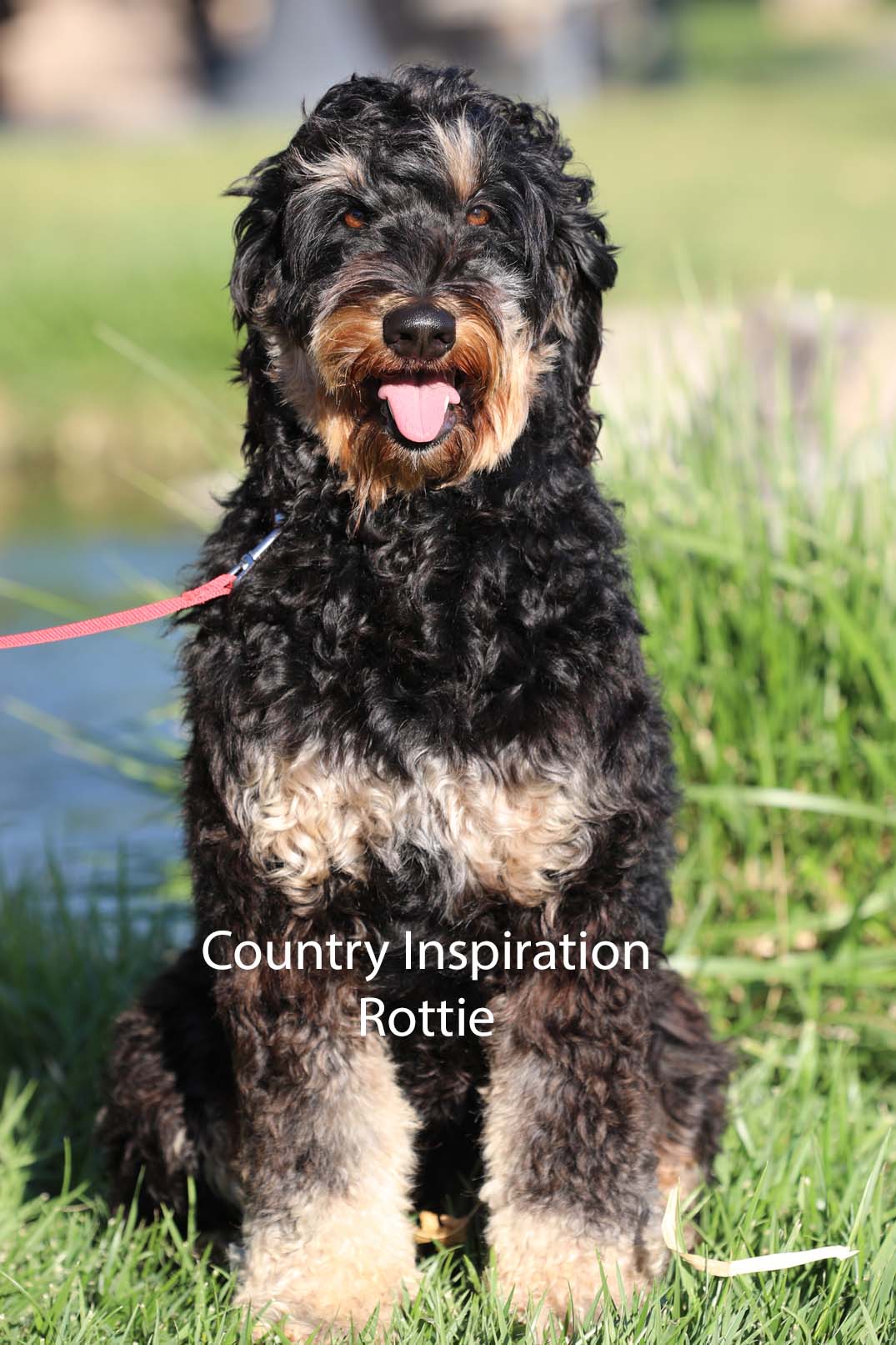
PHANTOM
This is any shading or two-toned coloration such as a Black dog with lower legs showing a soft toning of silver or gold. Or a dog that is born dark with golden shading at the roots or a slight brindling effect. (Rare color group)
RED
This color should be a solid even rich red in color. A true red should not be lighter at the root than the outer coat. Reds can fade as the dog grows older. Nose pigment to be Black. (Rare color group)
SILVER
This color can range in shades from very light pewter in color to a dark charcoal in color it is preferred to see an even color through the coat but acceptable to see uneven layering of color in the coat. Silvers are born Black with the coat color developing over time (1-3 yrs). Nose pigment to be Black.

